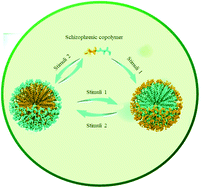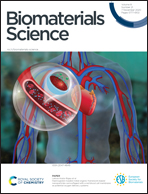“Smart” self-assembled structures: toward intelligent dual responsive drug delivery systems
Abstract
Combination of various polymeric blocks with distinct characteristics such as thermo-responsiveness, non-ionic nature and zwitterionic properties is an interesting approach toward fabricating copolymers undergoing a smart self-assembly process in an aqueous environment. In some cases, through a so-called “schizophrenic” self-assembly process, stimuli-induced self-assembly can occur from either double-hydrophilic or double hydrophobic polymers. In this process, the roles of the blocks forming the hydrophobic core and hydrophilic shell can be switched by changing the external conditions. This transformation in the solubilization profile leads to the fabrication of “smart” polymeric vehicles which could potentially control the release of their cargos as well as differentiate between encapsulated agents based on their charge and polarity properties. The aforementioned changes of the amphiphilicity of polymers in “schizophrenic” structures offer numerous self-assembly scenarios. In the current review, we summarize the polymer and peptide-based schizophrenic copolymers which could form micellar and vesicular (polymersome) systems providing novel structures with beneficial applications.



 Please wait while we load your content...
Please wait while we load your content...